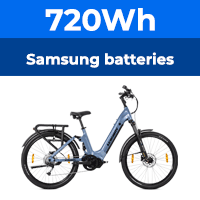My ebike usually fail when...
- I plug the wires incorrectly, such as doing reverse polarity, that killed a controller and a DC converter. Quite an instant death!
- My small AWG 24 snap because of a small pull... Had my speedometer that has its wires snapped so many times, my light snapped, my throttle snapped, my lipo balance wire snapped...
- Vibration makes the soldered wires or wires connections loose.
- Worse product ever I invested in are these bullet crimp terminals:
bullet crimp terminal | eBay They always come loose and have so high resistance. I had so many wiring issue with these terminals...
- And recently my hall sensors wires failed when I was 15 miles away from home. I had to take the train to go back home..
So, basically,
90% of my ebike issues come from wiring. Especially these tiny 24AWG wires that are everywhere (speedometer, hall sensors, cycle analyst, throttle, etc etc.)
Now I put a huge amount of solder on these wires to make sure they will stick on the connector, then use my glue gun as first layer of protection and wrap everything with a glue lined heatshrink as secondary layer of protection.
Do you also have the same issues or am I doing a bad job with my wires?







